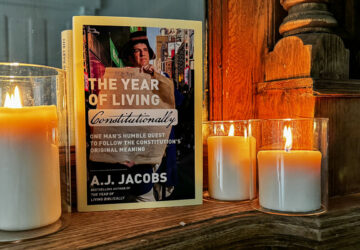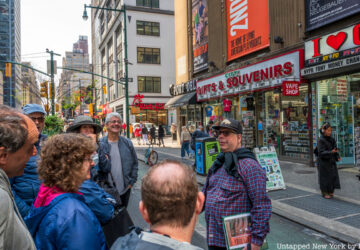In our newest episode of the Untapped New York podcast, we’re doing a deep dive into one of New York City’s most recognizable pieces of street furniture: fire alarm call boxes. You know what we’re talking about. A lot (but not all) of them are red and sit prettily on sidewalks with the ability to call the fire department and the police. Fire alarm call boxes have been around for more than a hundred years and come in different shapes and sizes, from the ornate Victorian ones to the more modern ones. Before the advent of telephones and much later, cell phones, they were the main way to get in contact with the fire department.
In this episode, you’ll hear interviews with several experts including Gary Urbanowicz, the former Executive Director of the New York City Fire Museum and its de facto historian, Jan Borodo, the FDNY’s current Executive Director of the Bureau of Plant Operations, and Warren Fuchs, a retired dispatcher who is known was as “The Voice of Brooklyn.” You’ll learn how fire alarm call boxes work, how they evolved, the many types of fire alarm call boxes there have been (more than you think!), whether they work, and much more. You’ll also hear how it sounded when one of the older mechanical call boxes was pulled.
How Many Fire Alarm Call Boxes Are There in NYC?
There are about 15,000 fire call boxes in New York City. Each are numbered usually with four digits, which denotes its location. In Manhattan and the Bronx, the numbers generally increase in number from south to north. The ones in Manhattan start with 0-0. In Brooklyn. It’s the reverse, with the numbers increasing as you go south. The numbering loosely follows the pattern of settlement.
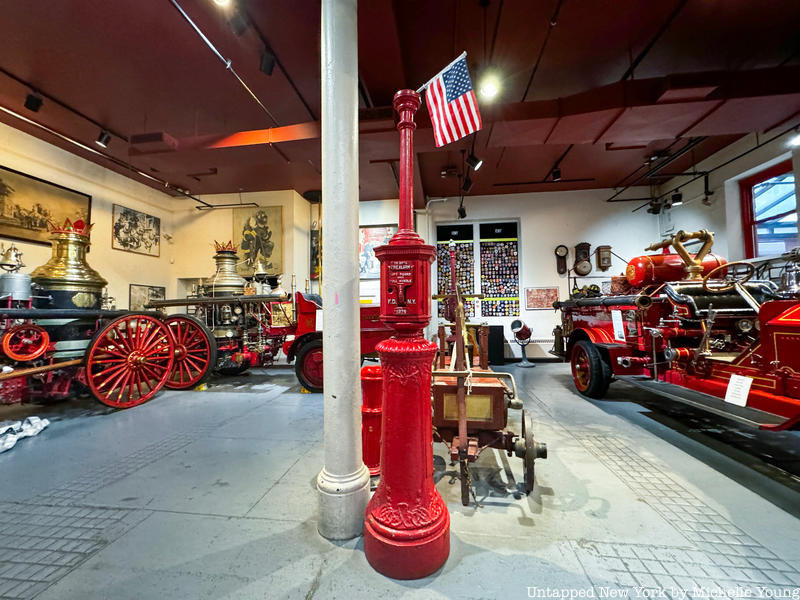
When Did the Fire Alarm Call Box Start Being Used?
According to Gary Urbanowicz, the earliest fire alarm call boxes were put on the street in the 1860s. They originally had a light on top, which helped people locate the call box in a time when the city was less dense. Some of the earliest call boxes, Gary tells us, “were very, very ornate with big, etched glass panels, quite beautiful.” Sometimes they were locked and required a key to open it, which seems counterintuitive. Even police officers did not have a key. There would be a sign on the call box that indicated where the key was located, often in a shop nearby. Inside, there would be a box with a handle to pull.
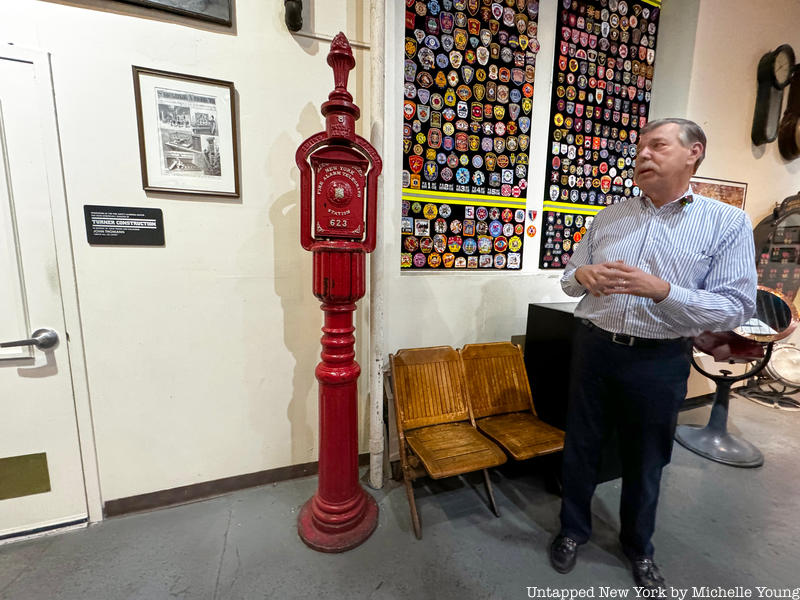
Between 1865 and 1870, New York City’s fire fighting services were run by the state governor, so some of the older boxes have an emblem specific to this time period—a circular shield in red and white. One of the most unique styes of fire alarm call boxes was designed for Rockefeller Center, and can be seen at the New York City Fire Museum. It’s in matte gold in an Art Deco style with a few red flourishes. Gary explains that this kind of box was called a”building box” and designed for inside a building. It also has an extra number to indicate that it was indoors.
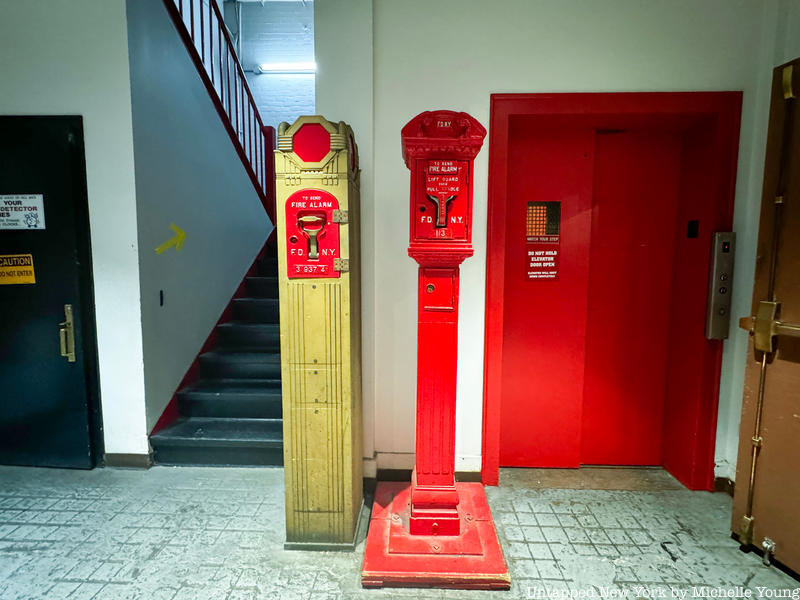
How Does a Fire Alarm Call Box Work?
The function of the call boxes has remained the same for the last hundred plus years. Unlike most other technologies, it was not phased out by the advent of new technology. Instead, new technologies were incorporated into the existing system. What has changed is the mode of communication—from the initial trigger itself which evolved from a mechanical handle to a call button that allowed for two-way conversation. The signal itself has evolved too from a system of bells to a faster, digitized system. But at its essence, the information the fire alarm call box is collecting and communicating has remained the same.
When you trigger the alarm on the call box, a signal is sent out to the borough dispatcher., who was located previously in a Fire Telegraph building. They were beautiful neoclassical structures, one in each borough, built in the early 1900s to improve the efficiency of the fire fighting service. They were deliberately sited in more isolated sites surrounded by a small park, to minimize risk from fires. The first telegraph buildings were approved for construction just a year of the devastating Triangle Shirtwaist Factory Fire in Greenwich Village killing 146 people, mostly women. They still exist today, mysteriously fenced off with little signage.
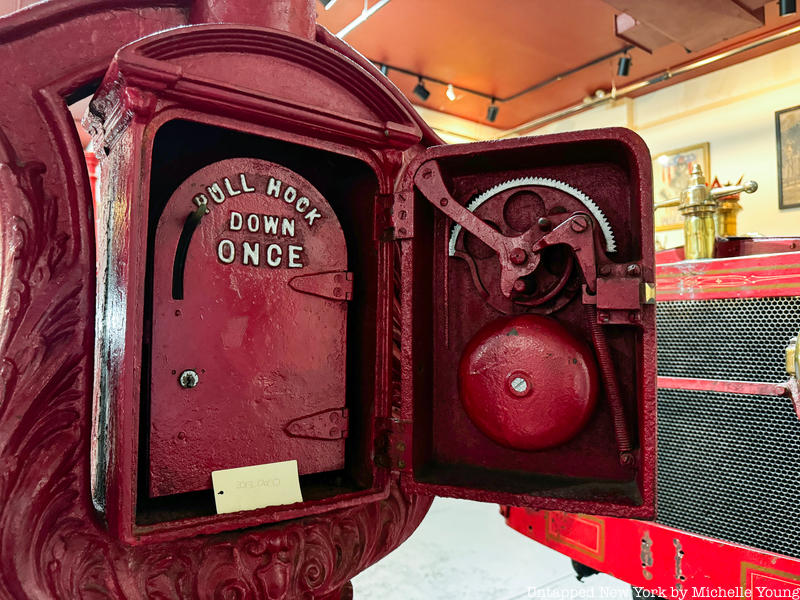
All calls went to the Fire Telegraph Buildings until very recently, when the city constructed the new PSACS, Public Safety Answering Centers. You may have seen the modern building in the Bronx with no windows that rises over the Hutchinson River Parkway which is a PSAC. In the past, the signal would ring a series of bells at the dispatcher’s office that indicated the number of the fire alarm call box that was run. One bell meant the number 1, two bells meant the number 2, and so forth. So a pattern of say, ring—ring ring—ring ring ring—ring ring ring ring would mean the call box 1234. The dispatcher would look up where that call box was located and find the nearest fire house, transmitting the same ring pattern to the fire house who would then similarly locate the firebox and respond to the incident.
In July 1977, the system was digitized. As Warren Fuchs describes in the podcast, once a fire alarm call box was activated, the alarm was “absorbed into the computer system. And instead of us looking up the box assignment manually, the computer did that for us. So then we sent it out through the computer, and it automatically picked the firehouses.” It was a lot of faster than the older system.
How Has the Fire Alarm Call Box Evolved?
In addition to the shift between mechanical and digital mode of communication, the fire alarm call boxes have evolved as well. The earlier ones utilized a hook or handle, which needed to be pulled down to trigger the alarm. Newer boxes are known as “voice alarm boxes,” and have the two flaps to contact the fire department or the police department. Once the alarm is rung, two-way voice communication is possible between the dispatcher and the person who rang the alarm (if they are still there!).
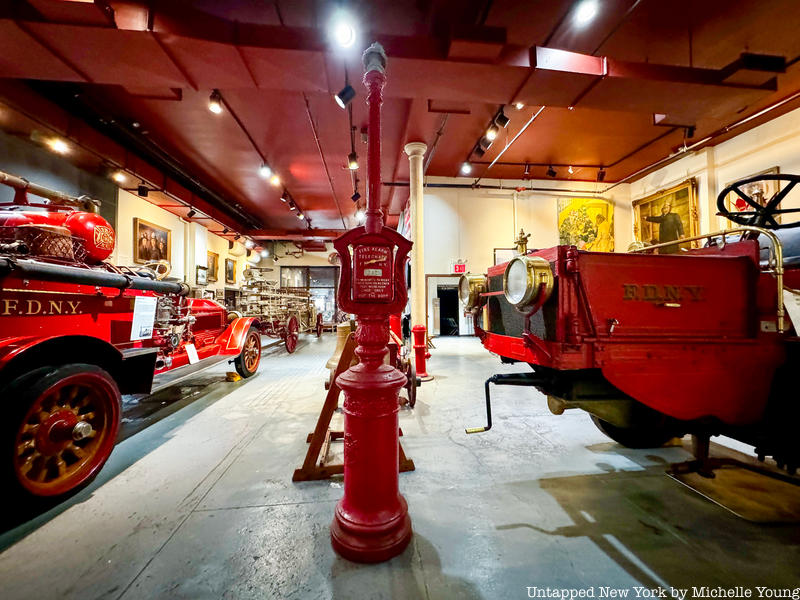
A process called modernization can convert the old mechanical fire alarm call boxes into the voice operated ones. As Jan Borodo, the FDNY’s current Executive Director of the Bureau of Plant Operations who manages the fire alarm call box system told us, conversion requires laying new cable to account for the different amperages between the old and new system, and inserting the new mechanism into the old boxes.

The newer voice operated call boxes also have different styles, from a fluted rectangular silver one to a red one with a more rounded top:
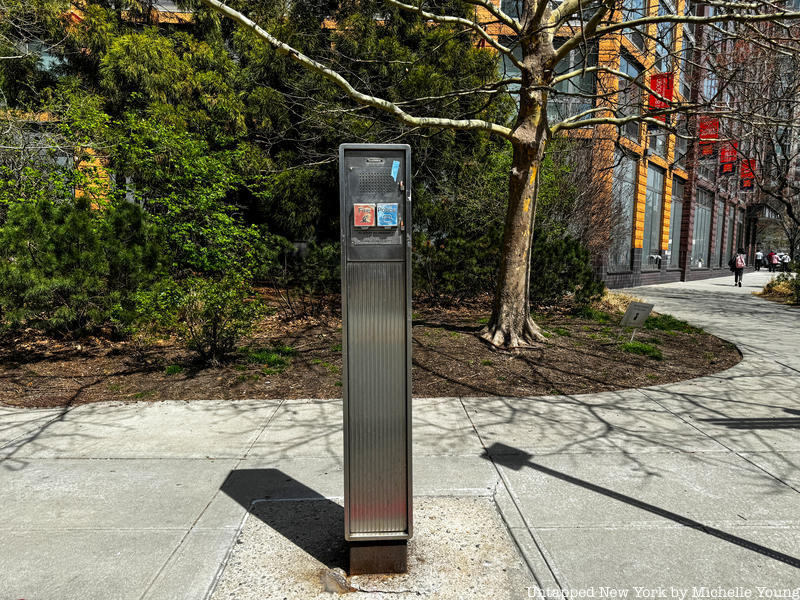
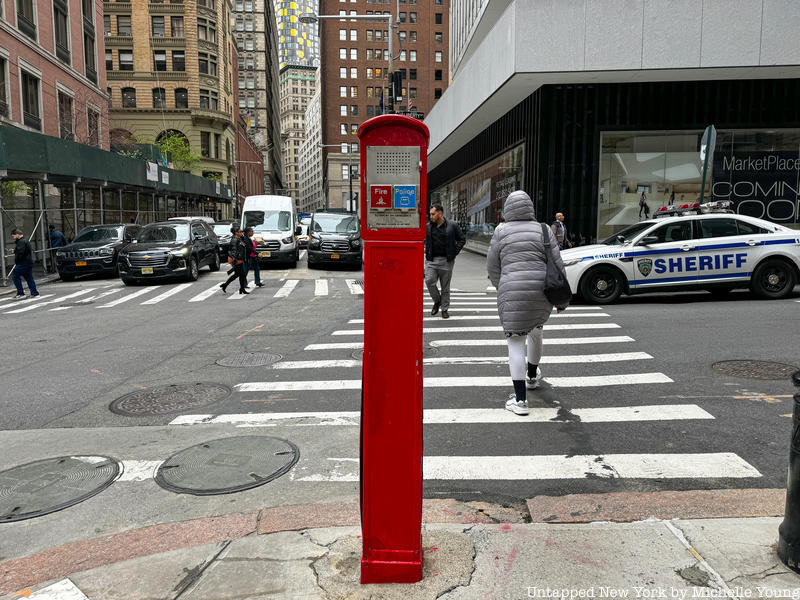
Another innovation is quiet unique: When Hurricane Sandy inundated New York City’s low-lying neighborhoods, it destroyed the cabling for the fire alarm call box system. Instead of replacing the cables, the FDNY decided to convert the fire alarm call boxes in the affected neighborhoods—the Rockaways, Red Hook, Coney Island, City Island, and some in the southern tip of Manhattan—into solar-powered fire alarm call boxes which use a cellular signal to send the signal.
Do Fire Alarm Call Boxes Actually Work?
The answer is most of the time! When we spoke to Jan Borodo at the beginning of March, he told us there were approximately 3,000 fire alarm call boxes out of service in New York City, or a little under 20%. Oftentimes, the outages are in clusters so a group of call boxes can often be fixed at once with repairs to the cabling.
The FDNY welcomes reports from the public on downed or out of order fire alarm call boxes and for those interested in preserving the historic call boxes, you can contact the FDNY via 3-1-1- to get the exact shade of red paint to touch one up.
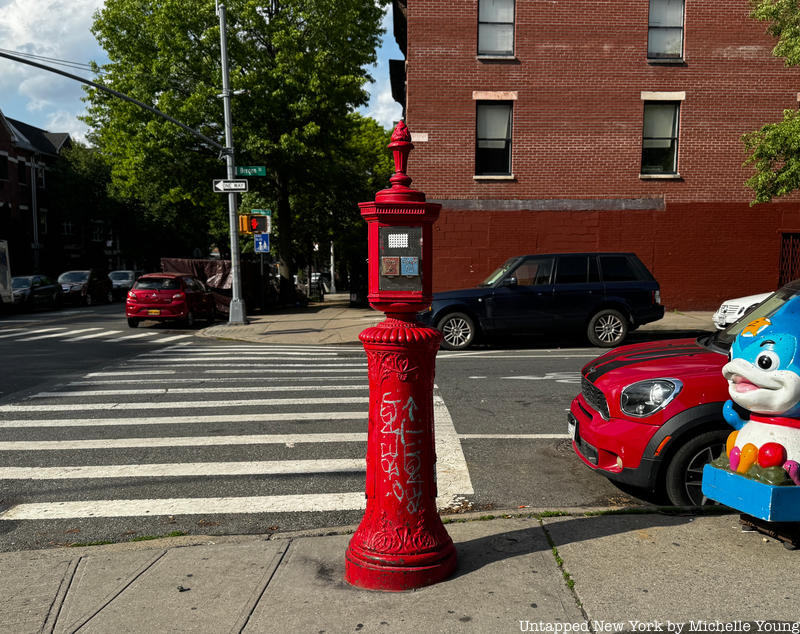
How Many False Alarms Are There?
We contacted the FDNY who kindly gave us the most recent statistics. In 2023, the FDNY responded to 9,522 fire call box alarms. Of those, 7,872 were malicious false alarms—almost 83%—and only 1,650 were actual emergencies. The false alarm rates for 2024 so far are about the same. This is still a vast improvement from before. In 1977, there were 262,998 false alarms and in 2001 there were 51,544 false alarms. In 2003, then-Mayor Bloomberg suggested removing all the fire alarm call boxes in New York City, but they survived and continue to alert the FDNY and NYPD to real emergency situations.
Why are Fire Alarm Call Boxes Still Around?
“There’s been a controversy about that,” says Urbanowitz, since quote unquote they say “everybody has all cell phones, But then again, not everybody has cell phones. So they are they are still out there.” According to Kyra King, FDNY EMS Captain who researches the accessibility of notification systems for the deaf, a lawsuit against the decommissioning of the call boxes in 1995 (further upheld in 2011) is the primary reason the call boxes are still in service today. Attorney Robert Stulberg, who represented the Civic Association of the Deaf of New York City said in 2011, “By removing this system, the city would be leaving our clients with no way to report emergencies from the street.”
Listen to the whole episode and subscribe to the Untapped New York podcast for the latest!

